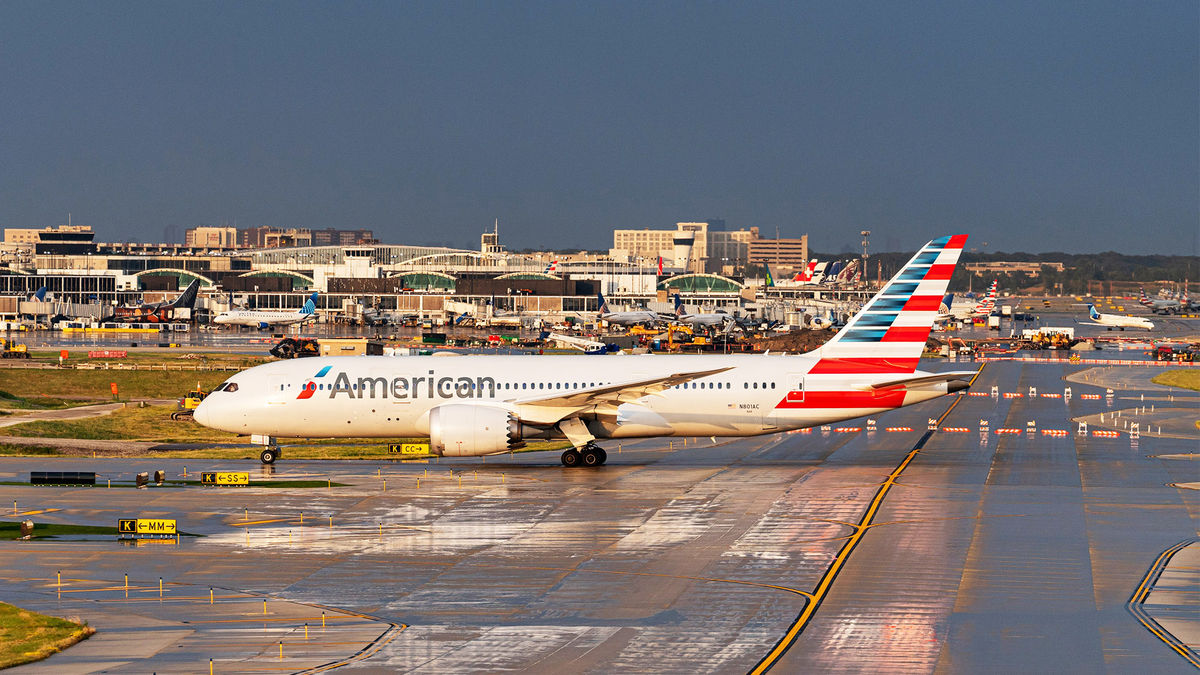A brawl is shaping up between American and United over gate access at Chicago O’Hare. United, though, has the Chicago Department of Aviation on its side.
At issue is a redistribution of gate space at O’Hare and the timing of when that redistribution takes place. The Chicago Department of Aviation has already begun the process, with a final determination set for June 1. Under its preliminary determination, United would gain approximately five gates and American would lose approximately four, according to a lawsuit American filed against the city on May 2. The changes would take effect in October.
Those gate allocations will be critical as the two airlines, each of which operate a hub at O’Hare, duke it out in the nation’s fourth-busiest airport. United which currently utilizes 90 O’Hare gates, accounted for 47.9% of O’Hare departures in 2024, Cirium flight schedule data shows.
American utilizes 71 O’Hare gates and accounted for 34.6% of departures last year, having reduced its annual seat capacity from O’Hare by 24.3% since 2019. But this year American is making a big push at O’Hare, including increasing its summer (June through August) seat count by 20.9% year over year, adding 17 new routes.
United, meanwhile, built back from the pandemic more aggressively at O’Hare, flying 99.2% of its 2019 seat count last year. This summer, United will offer 10.3% more seats.
American’s lawsuit, filed against the city of Chicago in a federal district court in Illinois, contends that the city, at the request of United, began the gate redetermination process prematurely and in violation of a lease agreement that the Department of Aviation negotiated with airlines in 2018 to lay the groundwork for an O’Hare expansion.
During those 2018 negotiations, American declined to sign on until the city agreed to expedite the construction of three common-use gates in the airport’s L concourse, next to gates it already operated. The last of those so-called L-Stinger gates became operational on March 14.
The city’s Department of Aviation will redistribute gate access based upon how active airlines have been in using their existing gates, which is why the timing of the gate redetermination process is so critical. If the process is completed on June 1, as planned, American’s allocation will be based upon the flying it did last year. But with American ramping up service this year, its allocation would presumably be higher if the process is delayed.
In its complaint, American contends that it only singed onto the 2018 lease agreement after extracting a commitment from the city that it would have 12 months to ramp up its gate usage after all the new L-Stinger gates became operational. Only then could the Department of Aviation conduct a usage assessment. And a reassignment of gate space would not be allowed to take effect until April 1 of the following year, which would be 2027 based on the recent L-Stinger completion.
American said that United is plotting to marginalize AA as a competitor at O’Hare and that the Department of Aviation is reneging on commitments it made to American in 2018.
“While United’s self-serving action may be predictable, defendants’ acquiescence is not,” the complaint reads.
The city of Chicago declined to comment, saying it doesn’t talk about pending litigation.
United though, isn’t content to sit on the sidelines. On Monday, the airline filed a motion to intervene in American’s suit. That same day, United president Brett Hart fired back at American in a letter to employees. United, he said, unequivocally rejects American’s efforts to block the city process and plans to protect its interests.
“It’s clear that American has been neglecting Chicago for years, and this meritless attempt to stop the city’s process from moving forward is merely a last-ditch effort to compensate for American’s well-documented lack of investment in their customers, O’Hare Airport and the Chicago community,” he wrote.
___
This report was updated on May 7 to add that United filed a motion to intervene in American’s suit.







